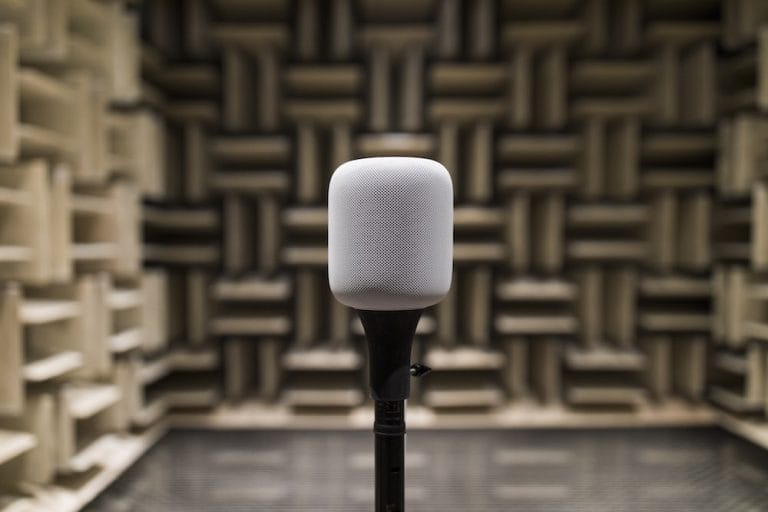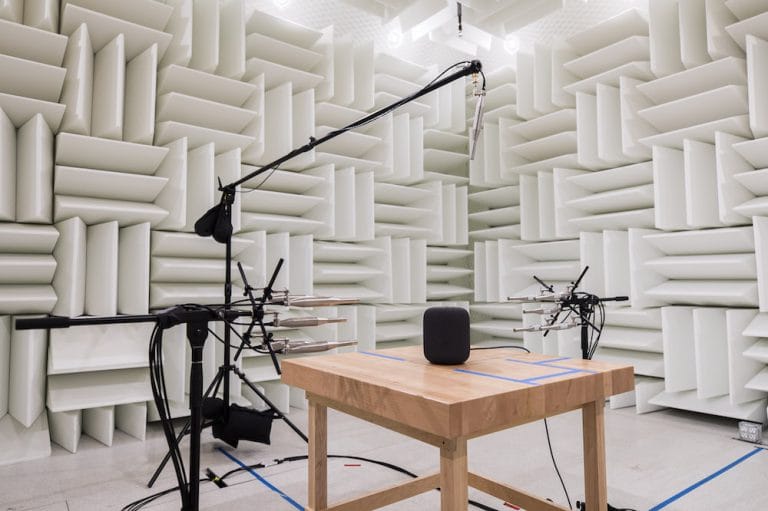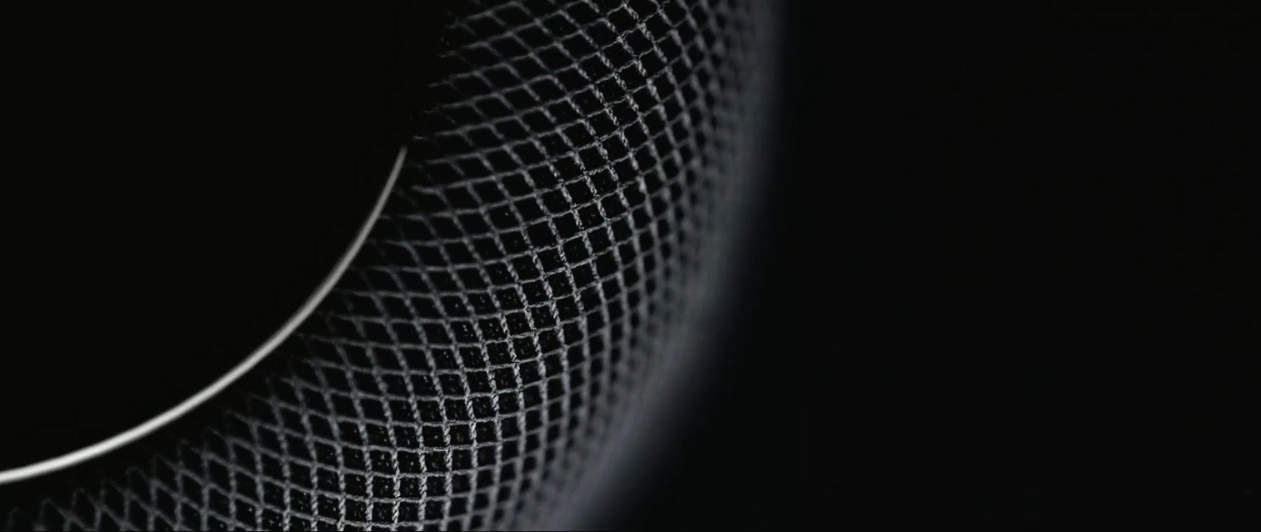Apple’s quest to build the perfect sounding speaker could also give a huge boost to audio quality on future iPhones, iPads and Macs.
To promote the launch of its new HomePod speaker, Apple gave journalists a behind-the-scenes look inside the custom audio lab it built to fine-tune every aspect of HomePod’s sound. Not only did Apple one of the best audio teams in the world, but it also gave them tools no company in the world can match.
Apple says work on HomePod started six years ago. The company asked its self if it’s possible to create a loud speaker that could be put in any room without it affecting the sound quality. This led to the creation of a small team that would eventually completely change how Apple approaches audio.
Inside Apple’s Audio Lab
The Loop’s Jim Dalrymple was given a tour of Apple’s audio lab with behind the scenes photos and all showing some of the crazy lengths Apple went through to make HomePod the best sounding speaker on the market.
To make sure the audio is just right, Apple build one of the largest anechoic chambers in the U.S. The chamber is a room built within another room set on isolating springs to keep out vibrations from the outside.

Photo: The Loop
“This impacts all of the products, it’s not just about HomePod,” said Phil Schiller told The Loop. “It’s about speakers in iPhone, the quad speakers in iPad, what we put into Macs, microphone pick up, AirPods, and Siri and Apple TV. All of those products at one point in the development cycle came through here.”
Customized Components
Instead of using off-the-shelf components, Apple made everything from scratch. The small team stayed focused on creating something compelling until they finally felt it was ready. Once HomePod got the greenlight, other teams were looped in to handle thermals, compute, power, wireless, and the different sensors found in HomePod.
Another chamber was built for HomePod to create voice detection algorithms that allow Siri notice commands in loud environments. The last chamber was built to listen specifically for electronic noise. No one wants their HomePod to hum when its on and doing nothing, so this room was built to eliminate that.

Photo: The Loop
“We think we’ve built up the biggest acoustics and audio team on the planet,” said Gary Geaves, Apple’s Senior Director, Audio Design and Engineering. “We’ve drawn on many of the elite audio brands and universities to build a team that’s fantastic. The reason we wanted to build that team was certainly for HomePod, but to also to double-down on audio across all of Apple’s products.”
The team obssessed about every detail, including the mesh fabric on the speaker which is custom made to be acoustically transparent.
Unfortunately for Apple, the team that perfect the audio isn’t the same team working to perfect Siri. Early reveiws for HomePod rave about the speakers amazing sound quality. But when it comes to Siri, HomePod just isn’t that smart.


